- The first castle on this site was probably built in 1068 on the order of William the Conqueror
- The height of the motte was reduced in the 19th century to make a bowling green
- Leicester was besieged for three weeks by a royal army in 1173. The town surrendered after these three weeks but the castle held out for eleven months
Leicester’s first castle
The first castle on this site was probably built in 1068 on the order of Duke William of Normandy (William I). It was located at the south-west corner of the Roman town walls, in a dominant position overlooking the Saxon town of about 350 houses, and the river crossing. The first keeper of the castle was Hugh de Grandmesnil, a Norman lord and supporter of Duke William.
How would it have looked like in 1068?
The castle originally consisted of a large mound of earth, or motte, encircled by a ditch, with a timber tower and palisade (defensive wall) on top. On the town side of the motte was the bailey, an adjacent enclosure defended by a ditch and rampart. The bailey would have contained a timber hall, stables, a chapel and various other buildings.
The motte survives today and is still 30m in diameter and 9m high, but it would have originally been much higher, perhaps as much as 18m. Archaeological excavation in the Newarke Houses garden has also revealed that the bailey ditch was at least 10m wide and 5m deep.
The de Grandmesnil family forfeited the castle in 1101 following a rebellion against Henry I. It was acquired by Robert de Beaumont, Count of Meulan who became the first earl of Leicester in 1107. Sometime afterwards Earl Robert started to rebuild parts of the castle in stone.
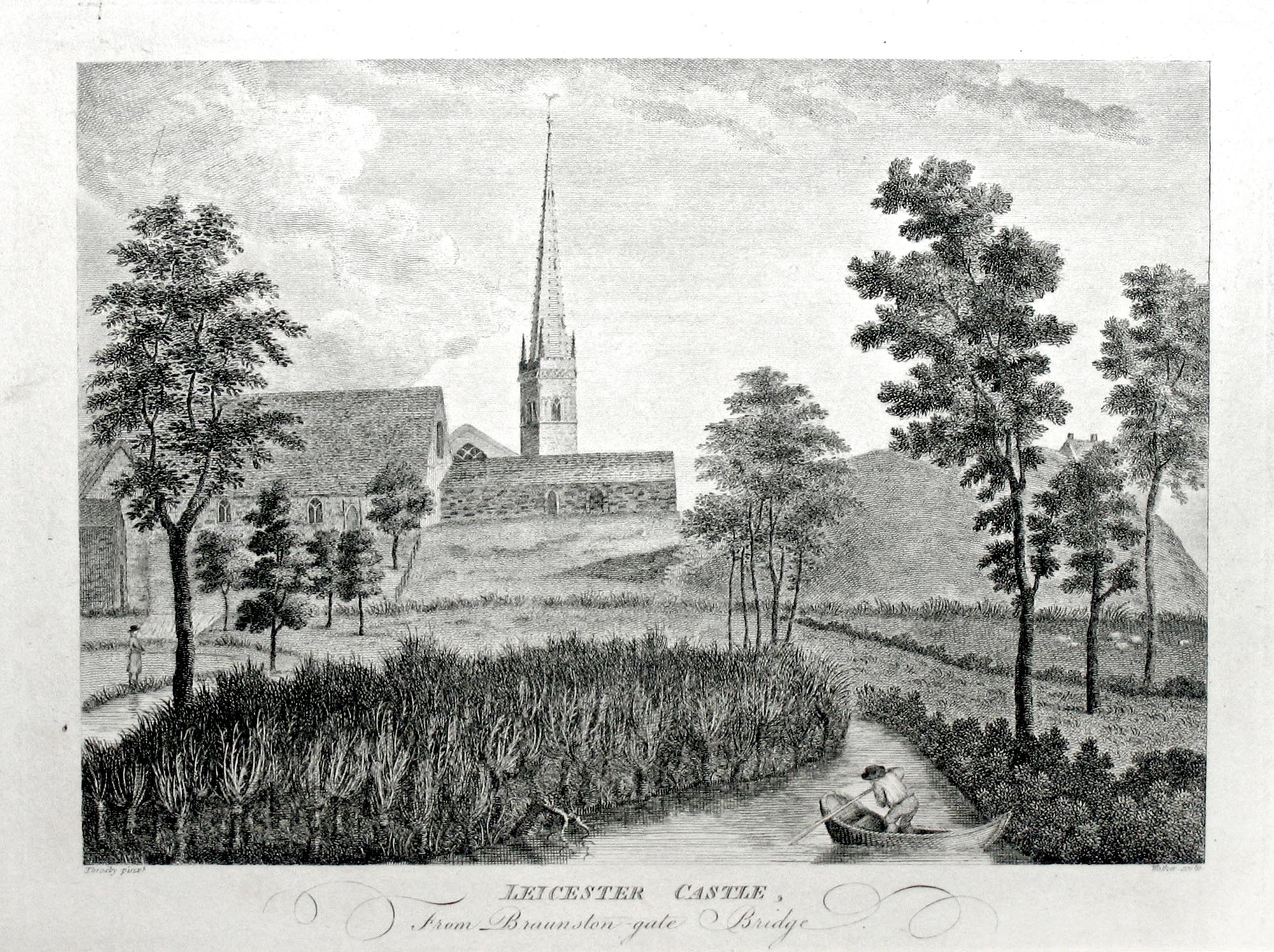
The siege of Leicester, 1173
In 1173, Earl Robert’s grandson Robert ‘Blanchmains’ (White Hands), third Earl of Leicester, became a principal supporter of a rebellion against Henry II. On 3 July, whilst the earl was in his castle at Breteuil in Normandy, the king’s ‘Army of England’ under the command of Richard de Luci, the Chief Justice of England, marched north and laid siege to Leicester.
Significant efforts were made to besiege the town and surviving records mention the royal army comprising at least 410 archers, over 300 knights, and 156 carpenters and an engineer ‘to make machines for the army at Leicester’ (siege weapons).
The defence of Leicester was led by the constable of the castle, Ansketil Mallory, and the town successfully resisted for three weeks, until an outbreak of fire forced the townspeople to sue for peace. This was allowed, and the town was fined 300 marks, its burgesses were expelled and the town gates and parts of the walls were dismantled.
The castle continued to hold out, however, and the royal army was eventually forced to break off the siege on 28 July. Earl Robert was subsequently defeated and captured at the Battle of Fornham in Suffolk on 17 October. Despite this Leicester Castle was not formally surrendered to the king until June 1174, nearly a year later.
Subsequently, the castle was garrisoned with royal troops who had orders to dismantle its defences. Excavations in the Newarke Houses Gardens have found that the bailey ditch was partially backfilled with stone rubble at this time, presumably from the castle walls, but many of the castle buildings, including the Great Hall, appear to have been spared.
The Motte in recent times
Use of the motte in the later history of the castle is unknown. It may have been used as a temporary cannon emplacement during the 1645 siege of Leicester during the English Civil War but this and any earlier structures on its summit were lost in the early 19th century when the motte’s elevation was lowered some twenty or thirty feet to create a bowling green for the adjacent Castle Inn (now gone).
During the 19th century works, eight skeletons were found buried side by side near the top of the motte. These are probably the remains of executed criminals who were sentenced to hang from the earl’s gallows.
The Castle Motte is open to the public and can be accessed through a path in Castle Gardens or from the Castle Square.
Gallery
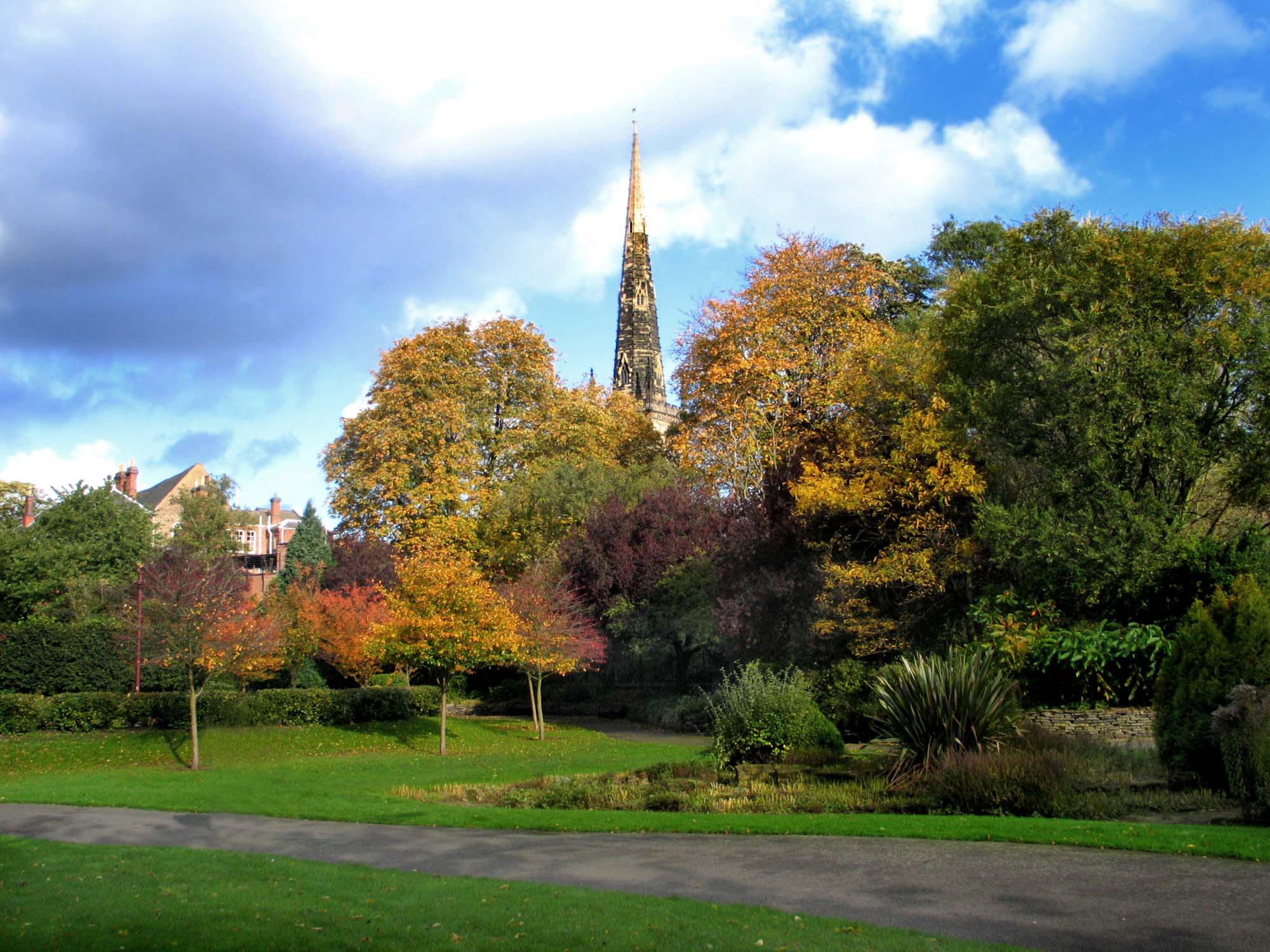
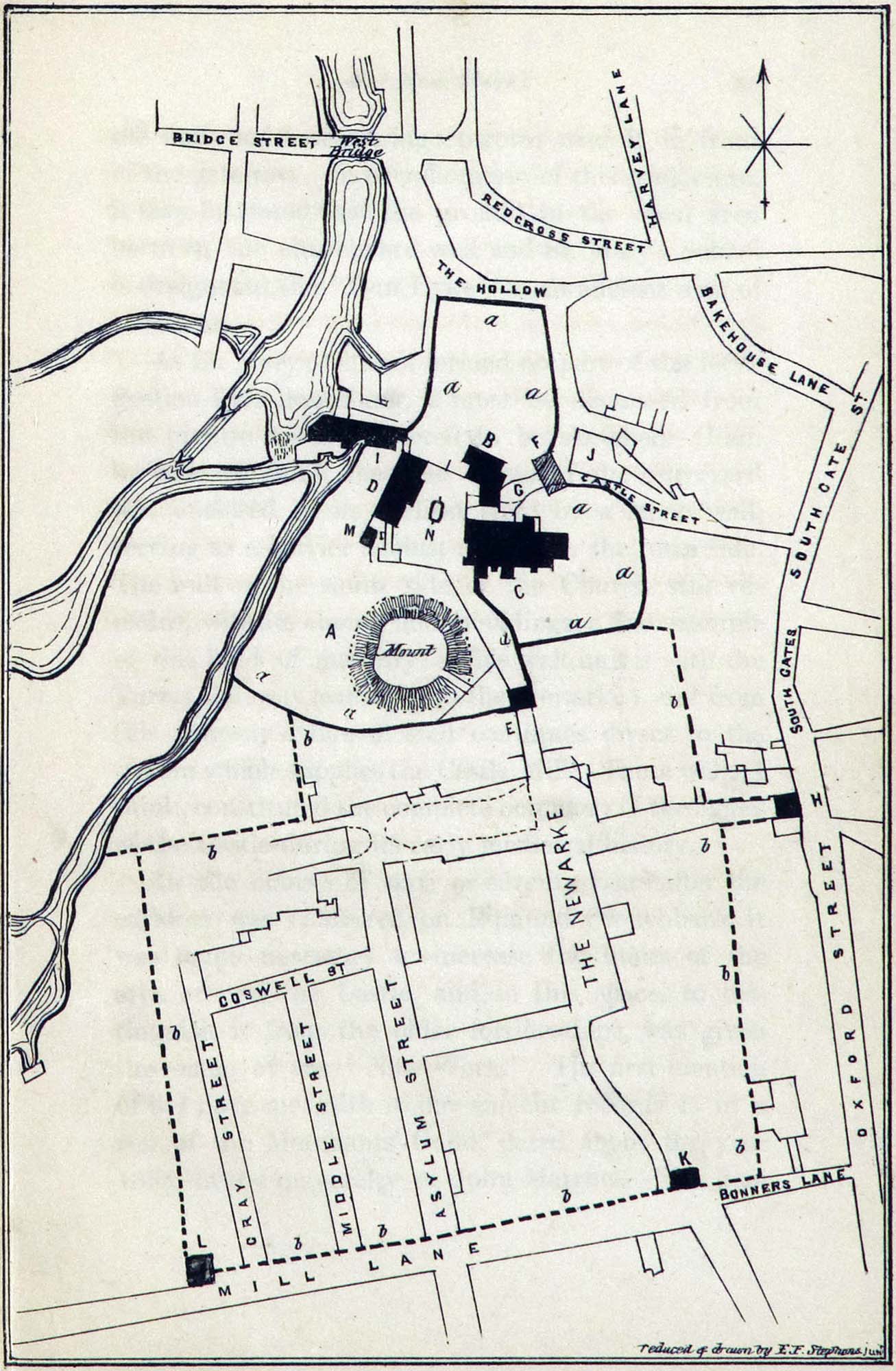
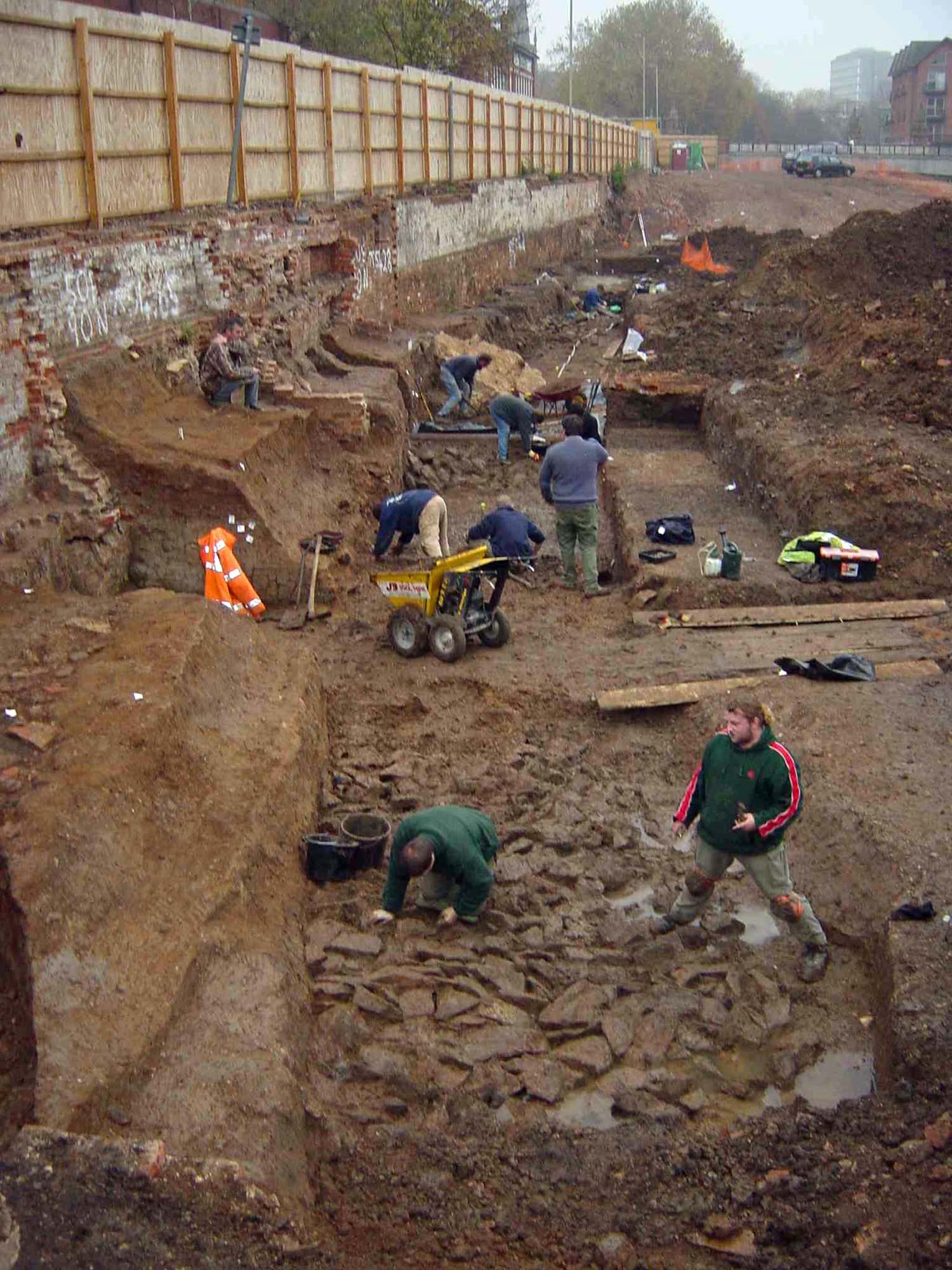
University of Leicester Archaeological Services
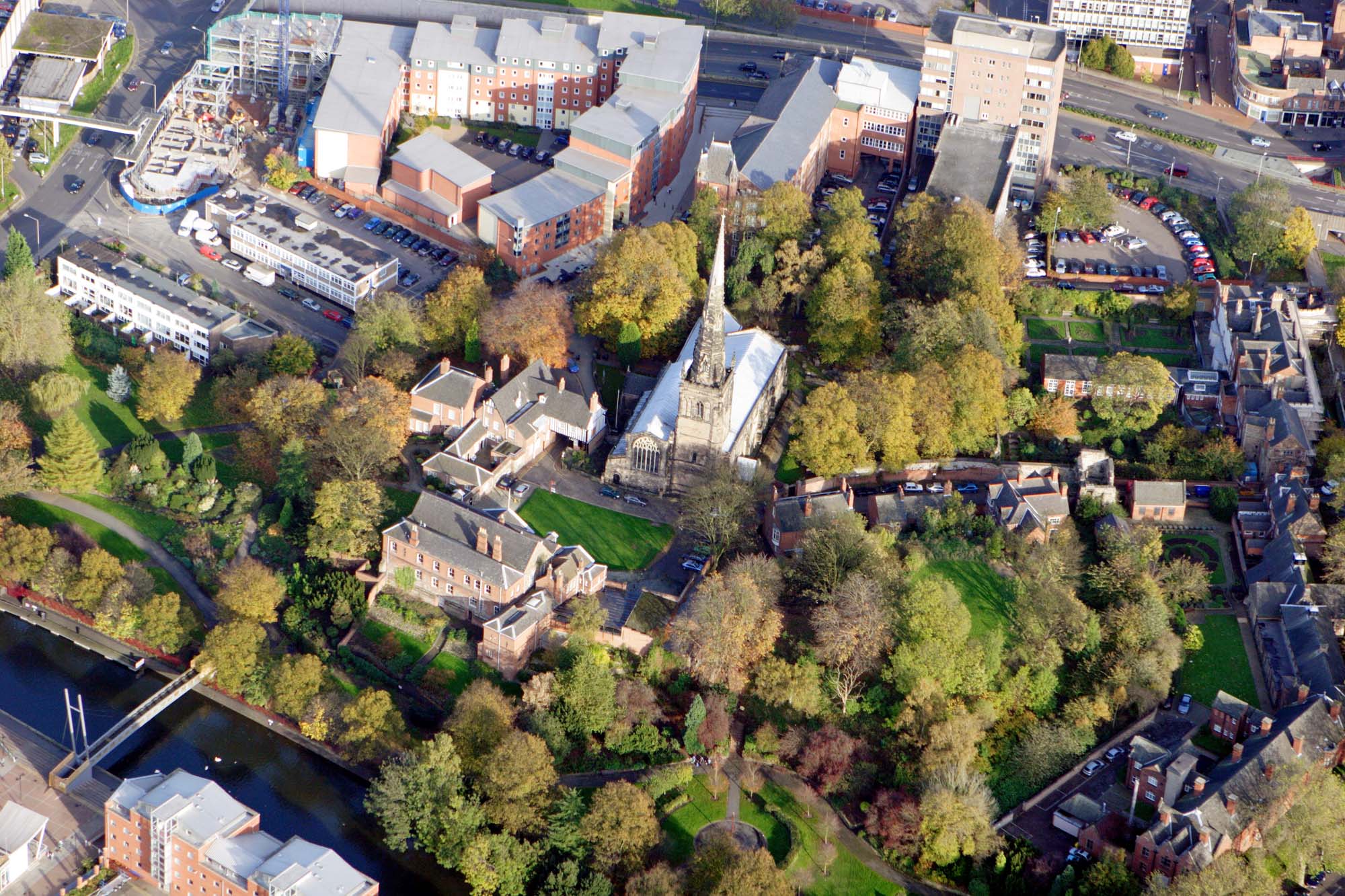
University of Leicester Archaeological Services
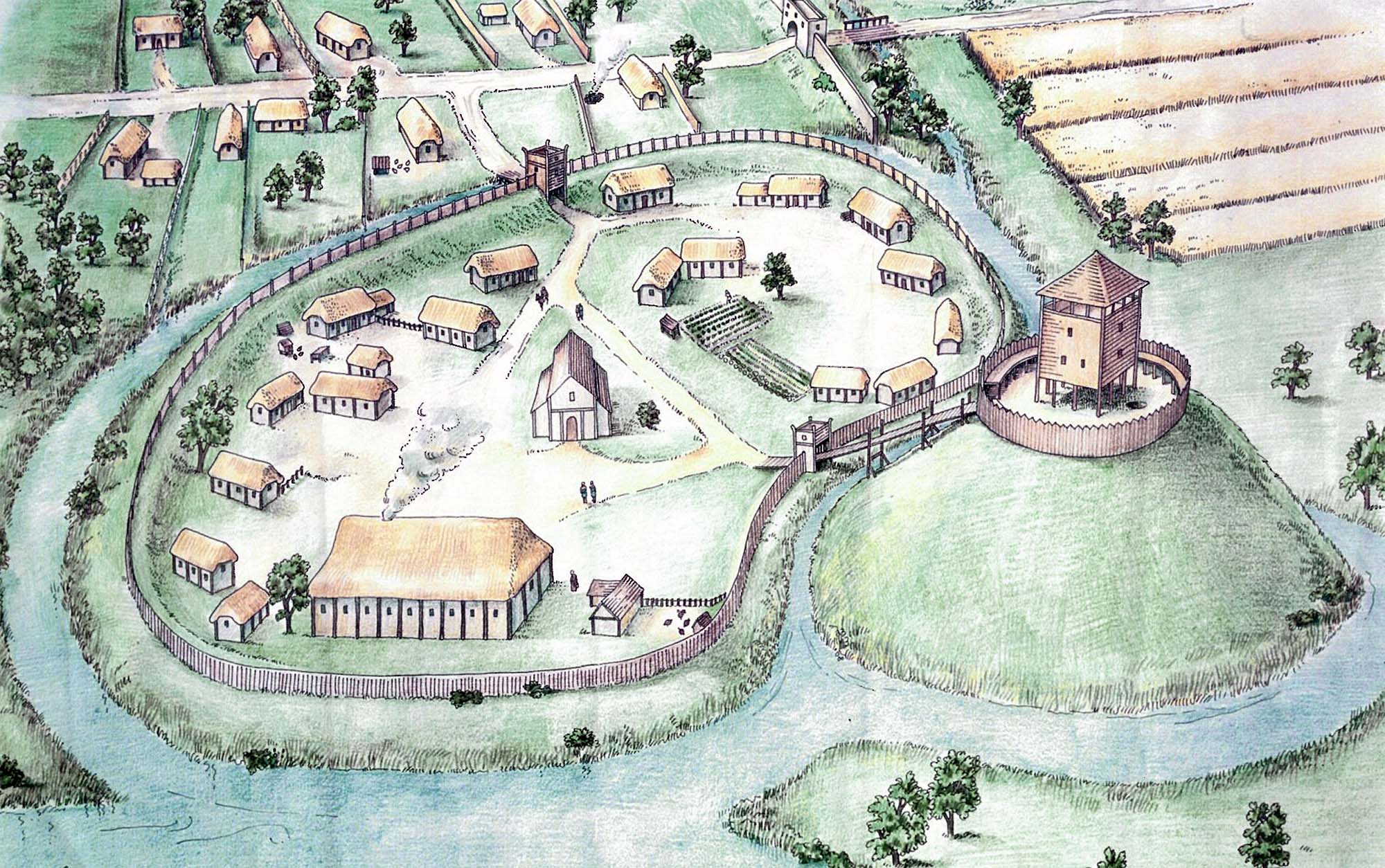
Sarah Geeves

Roman Leicester
(47- 500) A military fort was erected, attracting traders and a growing civilian community to Leicester (known as Ratae Corieltauvorum to the Romans). The town steadily grew throughout the reign of the Romans.
Medieval Leicester
(500 – 1500) The early years of this period was one of unrest with Saxon, Danes and Norman invaders having their influences over the town. Later, of course, came Richard III and the final battle of the Wars of the Roses was fought on Leicester’s doorstep.
-
The Castle Motte1068

-
Leicester Cathedral1086

-
St Mary de Castro1107

-
Leicester Abbey1138

-
Leicester Castle1150

-
Grey Friars1231

-
The Streets of Medieval Leicester1265

-
Leicester Market1298

-
Trinity Hospital and Chapel1330

-
Bow Bridgecirca 1350

-
Church of the Annunciation1353

-
John O’Gaunt’s Cellar1361

-
St John's Stone1381

-
Leicester Guildhall1390

-
The Magazine1400

-
The Blue Boar Inn1400

-
The High Cross1577

Tudor & Stuart Leicester
(1500 – 1700) The wool trade flourished in Leicester with one local, a former mayor named William Wigston, making his fortune. During the English Civil War a bloody battle was fought as the forces of King Charles I laid siege to the town.
Georgian Leicester
(1700 – 1837) The knitting industry had really stared to take hold and Leicester was fast becoming the main centre of hosiery manufacture in Britain. This new prosperity was reflected throughout the town with broader, paved streets lined with elegant brick buildings and genteel residences.
-
Great Meeting Unitarian Chapel1708

-
The Globe1720

-
17 Friar Lane1759

-
Black Annis and Dane Hills1764

-
Leicester Royal Infirmary1771

-
New Walk1785

-
Freemasons’ Hall1790

-
Gaols in the City1791

-
Friars Mill1794

-
City Rooms1800

-
Development of Highfields1800

-
Wesleyan Chapel1815

-
20 Glebe Street1820

-
Charles Street Baptist Chapel1830

-
Glenfield Tunnel1832

-
James Cook1832

Victorian Leicester
(1837 – 1901) The industrial revolution had a huge effect on Leicester resulting in the population growing from 40,000 to 212,000 during this period. Many of Leicester's most iconic buildings were erected during this time as wealthy Victorians made their mark on the town.
-
Leicester Union Workhouse1839

-
Campbell Street and London Road Railway Stations1840

-
The Vulcan Works1842

-
Belvoir Street Chapel1845

-
Welford Road Cemetery1849

-
Leicester Museum & Art Gallery1849

-
King Street1850

-
Cook’s Temperance Hall & Hotel1853

-
Amos Sherriff1856

-
Weighbridge Toll Collector’s House1860

-
4 Belmont Villas1862

-
Top Hat Terrace1864

-
Corah and Sons - St Margaret's Works1865

-
Kirby & West Dairy1865

-
The Clock Tower1868

-
Wimbledon Works1870

-
The Leicestershire Banking Company1871

-
St Mark’s Church and School1872

-
Victorian Turkish Baths1872

-
The Town Hall1876

-
Central Fire Stations1876

-
Aylestone Road Gas Works and Gas Museum1879

-
Gas Workers Cottages1879

-
Leicestershire County Cricket Club1879

-
Welford Road Tigers Rugby Club1880

-
Secular Hall1881

-
Development of Highfields1800

-
Abbey Park1881

-
Abbey Park Buildings1881

-
Victoria Park and Lutyens War Memorial1883

-
Leicester Fosse FC 18841884

-
Leicester Coffee and Cocoa Company Coffee Houses1885

-
St Barnabas Church and Vicarage1886

-
Abbey Pumping Station1891

-
Luke Turner & Co. Ltd.1893

-
West Bridge Station1893

-
Thomas Cook Building1894

-
The White House1896

-
Alexandra House1897

-
Leicester Boys Club1897

-
Grand Hotel and General Newsroom1898

-
Highfield Street Synagogue1898

-
Western Park1899

-
Asfordby Street Police Station1899

-
Leicester Central Railway Station1899

Edwardian Leicester
(1901 – 1910) Electric trams came to the streets of Leicester and increased literacy among the citizens led to many becoming politicised. The famous 1905 ‘March of the Unemployed to London’ left from Leicester market when 30,000 people came to witness the historic event.
-
YMCA Building1900

-
The Palace Theatre1901

-
Pares's Bank1901

-
Coronation Buildings1902

-
Halfords1902

-
High Street1904

-
George Biddles and Leicester's Boxing Heritage1904

-
Municipal Library1905

-
Leicester Boys Club1897

-
The Marquis Wellington1907

-
Guild Hall Colton Street1909

-
Women's Social and Political Union Shop1910

-
Turkey Café1901

Early 20th Century Leicester
(1910 – 1973) The diverse industrial base meant Leicester was able to cope with the economic challenges of the 1920s and 1930s. New light engineering businesses, such as typewriter and scientific instrument making, complemented the more traditional industries of hosiery and footwear manufacturing.
-
Dryad Handicrafts1912

-
De Montfort Hall1913

-
Leicester During the First World War1914

-
Fox’s Glacier Mints1918

-
Statue of Liberty1919

-
Housing in Saffron Lane1924

-
Winstanley House1925

-
Housing in North Braunstone1926

-
Lancaster Road Fire Station1927

-
The Little Theatre1930

-
Saffron Hill Cemetery1931

-
Braunstone Hall Junior School1932

-
Former City Police Headquarters1933

-
Savoy Cinema1937

-
Eliane Sophie Plewman1937
-
City Hall1938

-
Athena - The Odeon Cinema1938

-
The Blitz in Highfields1940

-
Freeman, Hardy and Willis - Leicester Blitz1940

-
Leicester Airport1942

-
Leicester’s Windrush Generations1948

-
Netherhall Estate1950
-
Housing at Eyres Monsell1951

-
Silver Street and The Lanes1960

-
Bostik1960

-
Auto-Magic Car Park (Lee Circle)1961

-
University of Leicester Engineering Building1963

-
Sue Townsend Theatre1963

-
Central Mosque1968

-
Belgrave Flyover1973

Modern Leicester
(1973 – present day) Industry was still thriving in the city during the 1970s, with the work opportunities attracting many immigrants from all over the world. While industry has declined in recent years, excellent transport links have made Leicester an attractive centre for many businesses. The City now has much to be proud of including its sporting achievements and the richness of its cultural heritage and diversity.
-
Haymarket Theatre1973

-
The Golden Mile1974

-
Acting Up Against AIDS1976

-
Belgrave Neighbourhood Centre1977

-
Diwali in Leicester1983

-
Leicester Caribbean Carnival1985

-
Samworth Brothers1986

-
Jain Centre1988

-
Guru Nanak Dev Ji Gurdwara1989

-
King Power Stadium2002

-
LCB Depot2004

-
Curve2008

-
BAPS Shri Swaminarayan Mandir2011

-
Makers Yard2012

- Roman Leicester
- Medieval Leicester
- Tudor & Stuart Leicester
- Georgian Leicester
- Victorian Leicester
- Edwardian Leicester
- Early 20th Century Leicester
- Modern Leicester
Civic Affairs















































































































































